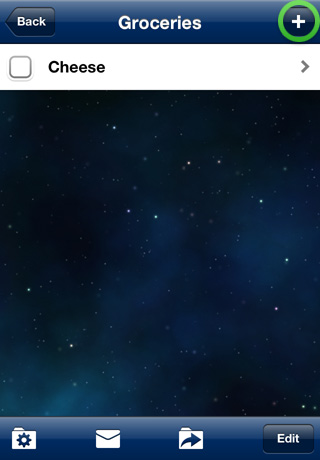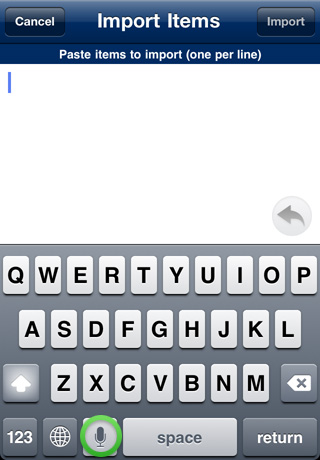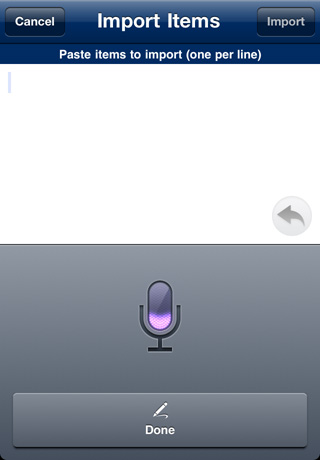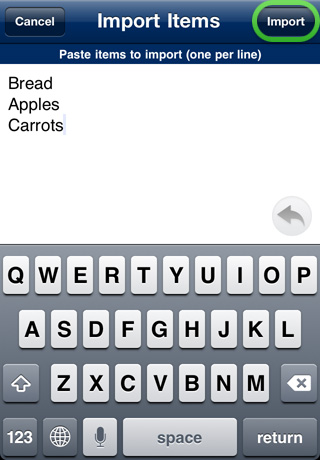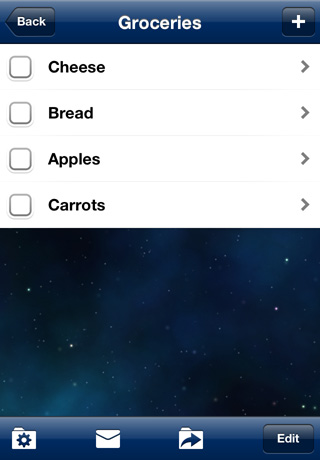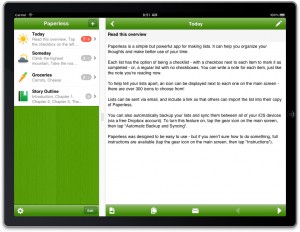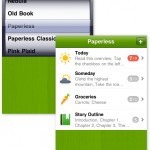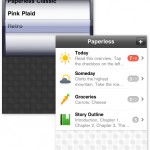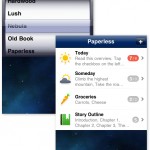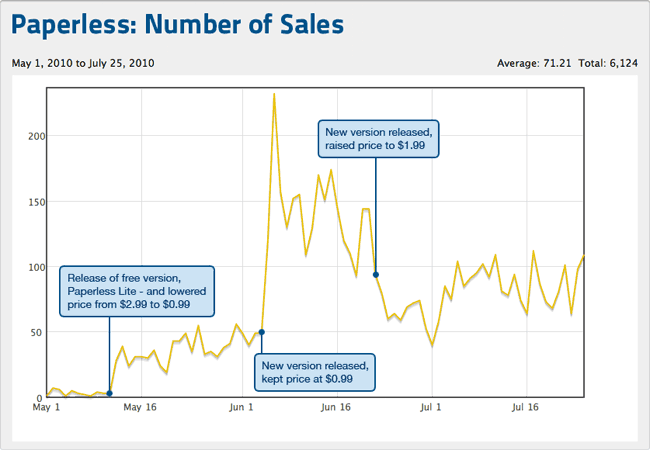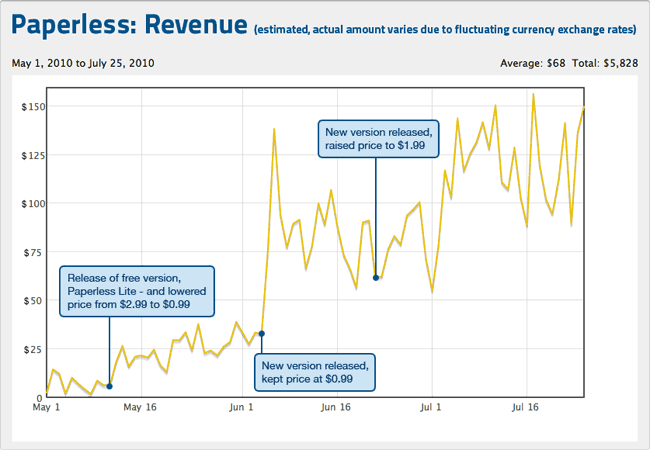After figuring out how to use Siri dictation to quickly add items to a list in Paperless, I discovered some other commands it recognizes – based on this article about Dragon Dictation (a third party app for dictating text).
Here are the dictation commands that have worked for me with Siri.
 For Paperless users: If you’d like your very own “pocket guide to Siri dictation commands”, open this web page on your iOS device, then tap this link to import a list titled “Siri Dictation Commands” into Paperless.
For Paperless users: If you’d like your very own “pocket guide to Siri dictation commands”, open this web page on your iOS device, then tap this link to import a list titled “Siri Dictation Commands” into Paperless.
Say this … |
… to do this |
|---|---|
| new line | move to the next line (like pressing “Return” on a keyboard) |
| new paragraph | to start a new paragraph |
| cap | to capitalize the next word
For example, saying: produces the text: (interestingly, if you say “Kevin Bacon”, Bacon is automatically capitalized for you) |
| caps on … caps off | to capitalize a section of text
For example, saying: produces the text: |
| all caps | to make the next word all uppercase
For example, saying: produces the text: |
| all caps on … all caps off | to make part of what you say uppercase
For example, saying: produces the text: |
| no caps | to make the next word lowercase
For example, saying: produces the text: |
| no caps on … no caps off | to make sure part of what you say is all lowercase
For example, saying: produces the text: |
| space bar | to prevent a hyphen from appearing in a normally hyphenated word
For example, saying: prevents first-class from being hyphenated, and produces the text: |
| no space | to prevent a space between words
For example, saying: produces the text: |
| no space on … no space off | to prevent a section of text from having spaces between words
For example, saying: produces the text: |
| “period” or “full stop” | to place a “.” at the end of a sentence |
| dot | .
For example, saying: produces the text: (note the subtle difference between saying point and dot… dot works between words) |
| point | .
For example, saying: produces the text: (note the subtle difference between saying point and dot… dot works between words) |
| “ellipsis” or “dot dot dot” | … |
| comma | , |
| double comma | ,, |
| “quote” or “quotation mark” | ”
(although, if you need to place some text within quotation marks, using the “quote … end quote” commands may be more accurate) |
| “open single quote…close single quote” | to place single quotes around a section of text
For example, saying: produces the text: |
| apostrophe | ‘
(although in many cases, apostrophes are automatically inserted, like when saying Sam’s new iPhone) |
| exclamation point | ! |
| inverted exclamation point | ¡ |
| question mark | ? |
| inverted question mark | ¿ |
| ampersand | & |
| asterisk | * |
| open parenthesis | ( |
| close parenthesis | ) |
| open bracket | [ |
| close bracket | ] |
| open brace | { |
| close brace | } |
| dash | –
For example, saying: produces the text: (note the difference in spacing between this and when saying hyphen) |
| hyphen | –
For example, saying: produces the text: (note the difference in spacing between this and when saying dash) |
| em dash | — |
| underscore | _ |
| plus sign | + |
| minus sign | – |
| equals sign | = |
| percent sign | % |
| copyright sign | © |
| registered sign | ® |
| section sign | § |
| dollar sign | $ |
| cent sign | ¢ |
| euro sign | € |
| yen sign | ¥ |
| degree sign | ° |
| caret | ^ |
| at sign | @ |
| pound sterling sign | £ |
| pound sign | # |
| greater than sign | > |
| less than sign | < |
| forward slash | / |
| back slash | |
| vertical bar | | |
| “smiley” or “smiley face” or “smile face” | 🙂 |
| “frowny” or “frowny face” or “frown face” | 🙁 |
| “winky” or “winky face” or “wink face” | 😉 |
| e.g. (pronounced as “e g”) | e.g.
For example, saying: produces the text: |
| i.e. (pronounced as “i e”) | i.e.
For example, saying: produces the text: |

